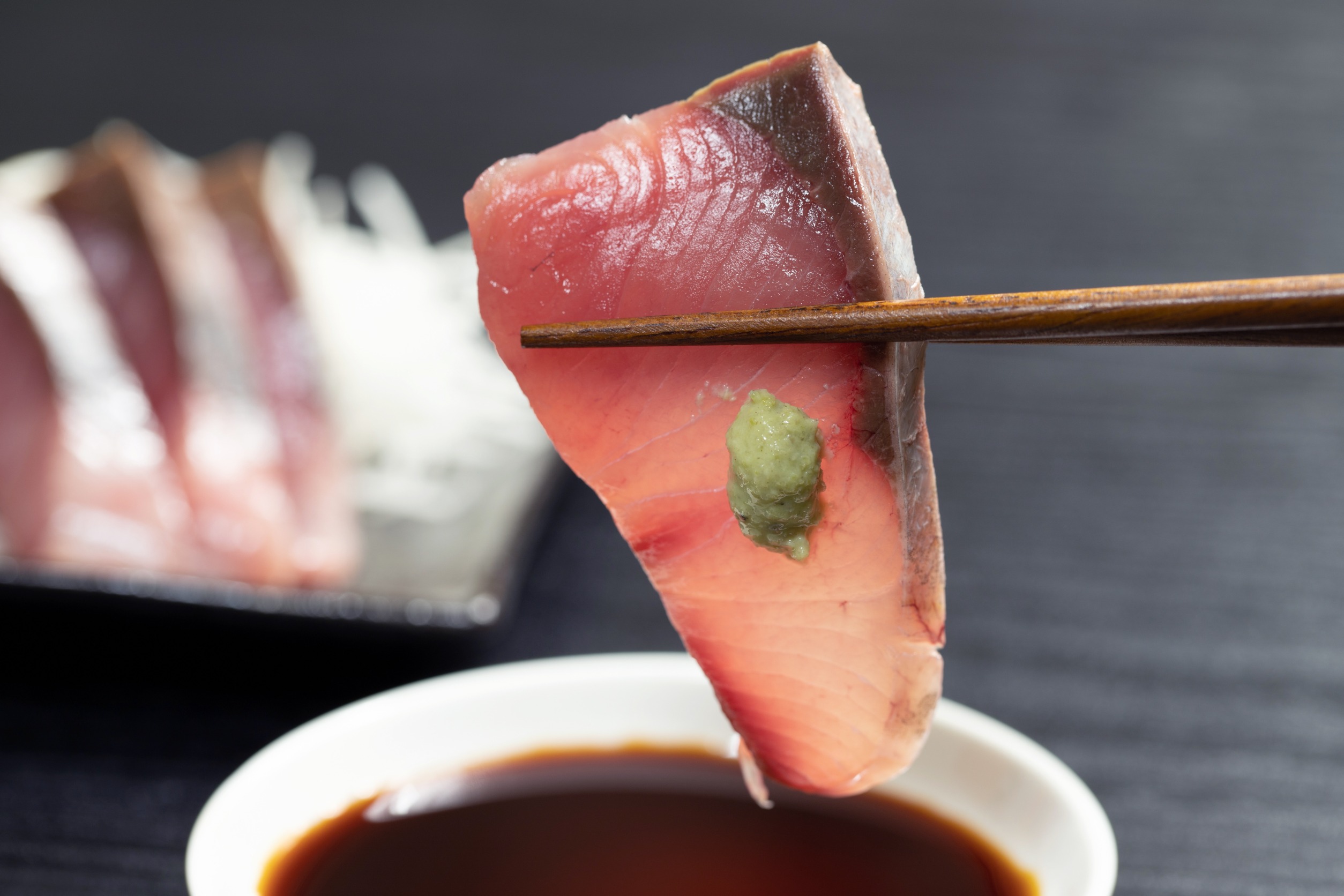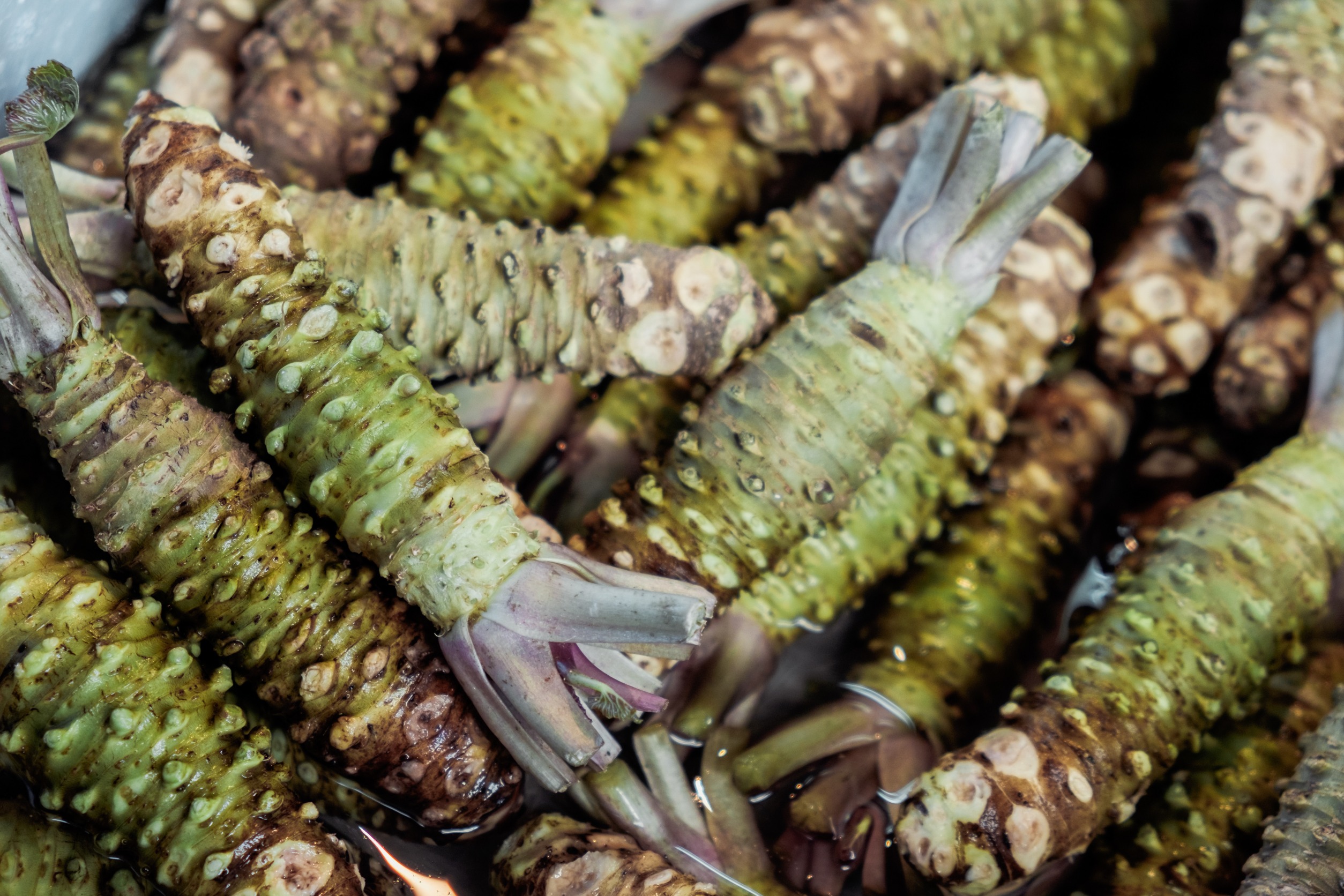What is Wasabi?

What is Wasabi?
Wasabi- An Exploration of the Spicy Sensation
Wasabi! If you’re a fan of sushi, then this little green paste has probably exploded in your mouth a time or two. But what exactly is wasabi, and where did this fiery flavor come from? This article will dive into the history, production, and flavor of this hot and happening condiment.
Wasabi: The Story Behind the Green Stuff
Traditionally, wasabi was made from the stem of a specific type of Japanese horseradish plant known as wasabi japonica. The stem was grated into a paste, which was then mixed with soy sauce and other ingredients to form the finished product. Today, most commercial wasabi is made from horseradish, food coloring, and other ingredients. The real wasabi plant is difficult to grow, and the flavor is often described as more delicate and complex than the imitation versions.
The History of Wasabi: From Ancient Japan to the World Stage
Wasabi has been a part of Japanese cuisine for centuries, and it’s believed to have been used as a condiment as far back as the Heian period (794-1185). Back then, it was used to season raw fish dishes and help preserve the fish. Over time, it evolved into a go-to condiment for sushi, sashimi, and other dishes, and it’s now considered an essential part of Japanese cuisine.
The Flavor Profile of Wasabi: Pungent, Floral, and Unforgettable
Wasabi is known for its distinctive flavor and heat, both intense and floral. Unlike chili peppers, which are primarily felt in the mouth and throat, wasabi’s heat is felt primarily in the sinuses, creating a unique experience like nothing else you’ve ever felt. The heat from wasabi dissipates quickly, which makes it ideal for use as a condiment, as it allows the flavors of the food to come through without overwhelming them.
The Wasabi Production Process
As mentioned, the traditional way of making wasabi involves grating the stem of the wasabi japonica plant. This process can be difficult and time-consuming, so most commercial wasabi is made from a combination of horseradish, mustard, and food coloring.
The horseradish is grated and mixed with mustard, food coloring, and other ingredients for commercial wasabi. The mixture is then fermented, enhancing the flavor and heat of the wasabi. The finished product is a smooth, green paste ready to bring warmth to your next meal.
The Health Benefits of Wasabi: More Than Just a Delicious Condiment
In addition to its unique flavor and heat, wasabi has several health benefits that make it a must-have condiment for any kitchen. It’s a natural anti-inflammatory and can help to soothe a sore throat and respiratory problems. It’s also a natural antimicrobial, which makes it effective in killing harmful bacteria and viruses.

Final verdict
Wasabi is a flavor-packed and versatile condiment with a rich history in Japanese cuisine. Whether you love its heat or its delicate flavor, there’s no denying that wasabi is an essential part of the culinary landscape. So next time you dig into some sushi or other Japanese dishes, appreciate this spicy sensation.










